This article was co-authored by Chris M. Matsko, MD. Dr. Chris M. Matsko is a retired physician based in Pittsburgh, Pennsylvania. With over 25 years of medical research experience, Dr. Matsko was awarded the Pittsburgh Cornell University Leadership Award for Excellence. He holds a BS in Nutritional Science from Cornell University and an MD from the Temple University School of Medicine in 2007. Dr. Matsko earned a Research Writing Certification from the American Medical Writers Association (AMWA) in 2016 and a Medical Writing & Editing Certification from the University of Chicago in 2017.
There are 16 references cited in this article, which can be found at the bottom of the page.
wikiHow marks an article as reader-approved once it receives enough positive feedback. In this case, 89% of readers who voted found the article helpful, earning it our reader-approved status.
This article has been viewed 230,969 times.
Leprosy, also known as Hansen’s disease, is a bacterial disease that can cause skin lesions, disfiguration, damage to the nerves and eyes, and other problems. Fortunately, the disease is treatable with medication. If treated properly, those with leprosy can live normal lives and recover from the disease.[1]
Steps
Seeking Treatment
-
1Seek care as soon as possible. Leprosy is treatable with medication, and most patients can continue their lives normally if they are treated. The disease is only mildly contagious when it is untreated, and once you are taking the medication, you are no longer contagious to others. However, if leprosy is left untreated it can cause severe problems with the limbs (hands and feet), eyes, skin, and nerves.[2]
-
2Take care not to spread the disease to others. Hansen’s disease is moderately contagious when untreated. It can spread to others by air, such as when you sneeze or cough. Remember to cover your face when you cough or sneeze to prevent airborne droplets from spreading the disease to others until you can see a doctor and begin treatment.[3]Advertisement
-
3Have your doctor determine the form of leprosy you have. Sometimes leprosy manifests only as a skin lesions, and sometimes it takes more severe forms. The particular treatment plan you follow will depend on the form of leprosy you have. Your doctor can diagnose this.[4]
-
4Take a multiple drug treatment (MDT) provided by your doctor. A number of antibiotics (usually a combination of dapsone, rifampicin and clofazimine) are prescribed to treat leprosy. These drugs kill the bacteria that causes the disease (Mycobacterium leprae) and cure people infected by it.[7] Your doctor will prescribe medications to take based on your particular case of leprosy.
- The World Health Organization (WHO) provides the MDT free to patients around the world through the Ministry of Health. In the United States medication for leprosy is provided by the National Hansen’s Disease Program.
- Once you start taking the medications, you can no longer spread the disease to others. You do not have to be quarantined.[8]
- Daily and/or monthly doses of dapsone, rifampicin and clofazimine may be prescribed for 24 months in many cases of leprosy.[9]
- If leprosy only shows as a skin lesion, patients may be recommended to take the medication treatment for six months.[10]
- In the United States, multibacillary cases may be treated for one year and paucibacillary cases for two years.
- If leprosy only manifests as a single skin lesion, the patient may be able to treat it with just a single dose of dapsone, rifampicin and clofazimine.
- Multibacillary cases may require multiple treatments to cure.
- Drug resistance to these medications is rare.
- Side effects of these drugs are generally mild. Talk to your physician if you have questions.[11]
Managing Symptoms and Recovery
-
1Take your antibiotics. Continue to take the antibiotics your doctor prescribes you, according to the directions you have been given. If you do not take the antibiotics as directed, you could become sick again.[12]
-
2Monitor your progress for any side effects or complications. If you notice changes in your condition, experience pain, etc., then talk to your doctor. In particular, leprosy patients are susceptible to certain complications: [13]
- Neuritis, silent neuropathies (nerve damage without pain), pain, burning, tingling, and sudden numbness may occur. This can be treated with corticosteroids. If left untreated, it can cause permanent injury and loss of function.
- Iridocyclitis, or inflammation of the iris of the eye can also occur. If does, you will need to see an eye specialist right away. It can be treated with special drops, but permanent damage can result if it is left untreated.
- Orchitis, or inflammation of a testis can also occur. It can be treated with corticosteroids, but let your doctor know immediately if you notice this symptom, as sterility can result.
- Ulcers on the foot can result from leprosy. You doctor can develop a treatment plan to reduce this problem using splints, special footwear, and dressing of the wounds.[14]
- The nerve damage and skin problems associated with leprosy can cause disfiguration and loss of function in the hands and feet. Plans to prevent and/or manage these symptoms, specific to your case, can be provided by your physician.[15]
-
3Take care to prevent injuries. Leprosy can cause numbness.[16] If this happens, you might not notice when the numb area is in pain, and you might harm the area without realizing it. Be extra cautious to avoid injuries like burns and cuts on these affected areas.
- Wearing gloves or special footwear can protect you if you have numbness in your extremities.[17]
-
4Continue to see your physician. Keep track of your progress as you recover, and note any symptoms you have. Continue to see your doctor for monitoring, and be sure to ask any questions you may have.
Expert Q&A
-
QuestionAre there side effects to the medication?
 Chris M. Matsko, MDDr. Chris M. Matsko is a retired physician based in Pittsburgh, Pennsylvania. With over 25 years of medical research experience, Dr. Matsko was awarded the Pittsburgh Cornell University Leadership Award for Excellence. He holds a BS in Nutritional Science from Cornell University and an MD from the Temple University School of Medicine in 2007. Dr. Matsko earned a Research Writing Certification from the American Medical Writers Association (AMWA) in 2016 and a Medical Writing & Editing Certification from the University of Chicago in 2017.
Chris M. Matsko, MDDr. Chris M. Matsko is a retired physician based in Pittsburgh, Pennsylvania. With over 25 years of medical research experience, Dr. Matsko was awarded the Pittsburgh Cornell University Leadership Award for Excellence. He holds a BS in Nutritional Science from Cornell University and an MD from the Temple University School of Medicine in 2007. Dr. Matsko earned a Research Writing Certification from the American Medical Writers Association (AMWA) in 2016 and a Medical Writing & Editing Certification from the University of Chicago in 2017.
Family Medicine Physician Some of the antibiotics may have a side effect of diarrhea for example. Some antibiotics predispose people to developing C. diff colitis. Adverse effects of dapsone include the following: hypersensitivity syndrome, methemoglobinemia, and agranulocytosis. Check with your doctor and pharmacist.
Some of the antibiotics may have a side effect of diarrhea for example. Some antibiotics predispose people to developing C. diff colitis. Adverse effects of dapsone include the following: hypersensitivity syndrome, methemoglobinemia, and agranulocytosis. Check with your doctor and pharmacist. -
QuestionHow do I remove my leprosy marks?
 Chris M. Matsko, MDDr. Chris M. Matsko is a retired physician based in Pittsburgh, Pennsylvania. With over 25 years of medical research experience, Dr. Matsko was awarded the Pittsburgh Cornell University Leadership Award for Excellence. He holds a BS in Nutritional Science from Cornell University and an MD from the Temple University School of Medicine in 2007. Dr. Matsko earned a Research Writing Certification from the American Medical Writers Association (AMWA) in 2016 and a Medical Writing & Editing Certification from the University of Chicago in 2017.
Chris M. Matsko, MDDr. Chris M. Matsko is a retired physician based in Pittsburgh, Pennsylvania. With over 25 years of medical research experience, Dr. Matsko was awarded the Pittsburgh Cornell University Leadership Award for Excellence. He holds a BS in Nutritional Science from Cornell University and an MD from the Temple University School of Medicine in 2007. Dr. Matsko earned a Research Writing Certification from the American Medical Writers Association (AMWA) in 2016 and a Medical Writing & Editing Certification from the University of Chicago in 2017.
Family Medicine Physician Leprosy usually leaves some kind of mark. You might want to try a cream or moisturizer, but I do not believe that there is any avoiding these marks. Indeed, it may take a few years for the marks to go away completely.
Leprosy usually leaves some kind of mark. You might want to try a cream or moisturizer, but I do not believe that there is any avoiding these marks. Indeed, it may take a few years for the marks to go away completely.
References
- ↑ https://www.cdc.gov/leprosy/index.html
- ↑ https://rarediseases.org/rare-diseases/leprosy/
- ↑ https://www.cdc.gov/leprosy/transmission/index.html
- ↑ https://familydoctor.org/condition/leprosy/
- ↑ https://www.cdc.gov/leprosy/health-care-workers/clinical-diseases.html
- ↑ http://www.nlm.nih.gov/medlineplus/ency/article/001347.htm
- ↑ https://www.who.int/en/news-room/fact-sheets/detail/leprosy
- ↑ https://www.betterhealth.vic.gov.au/health/conditionsandtreatments/leprosy
- ↑ http://www.hrsa.gov/hansensdisease/diagnosis/recommendedtreatment.html
- ↑ http://www.cdc.gov/immigrantrefugeehealth/exams/ti/panel/technical-instructions/panel-physicians/hansens-disease.html#treatment
- ↑ http://www.hrsa.gov/hansensdisease/diagnosis/chemotherapy.html
- ↑ http://www.cdc.gov/leprosy/treatment/
- ↑ http://www.hrsa.gov/hansensdisease/diagnosis/reactions.html
- ↑ http://www.hrsa.gov/hansensdisease/diagnosis/wounds.html
- ↑ http://www.hrsa.gov/hansensdisease/diagnosis/wounds.html
- ↑ http://www.cdc.gov/leprosy/treatment/
- ↑ https://www.hrsa.gov/hansens-disease/diagnosis/patient-education.html
- ↑ http://www.hrsa.gov/hansensdisease/
- ↑ https://rarediseases.org/rare-diseases/leprosy/
About This Article
If you have symptoms of leprosy, such as light-colored lesions or numb areas on your skin, see your doctor for treatment immediately. The sooner you get help, the better your chances of a full recovery will be. Let your doctor examine you so they can determine which kind of leprosy you have and how best to treat it. They will likely prescribe a combination of different antibiotics to treat your condition, and you may need to stay on these medications for several months. To ensure that you recover fully, follow your doctor’s instructions for taking your medications carefully. While you have leprosy, cover your mouth when you cough or sneeze to help prevent spreading the disease to others. Read on for more advice from our Medical co-author, including how to manage your symptoms as you recover!
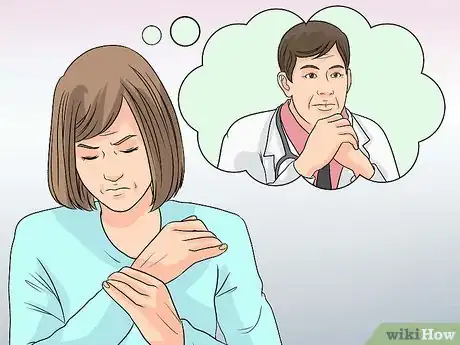
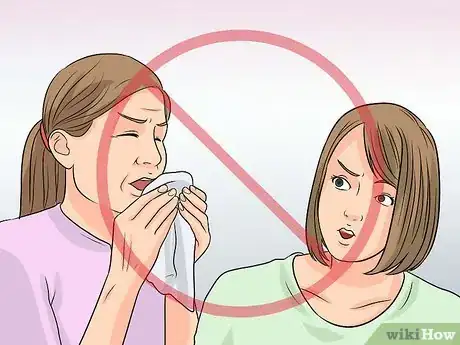
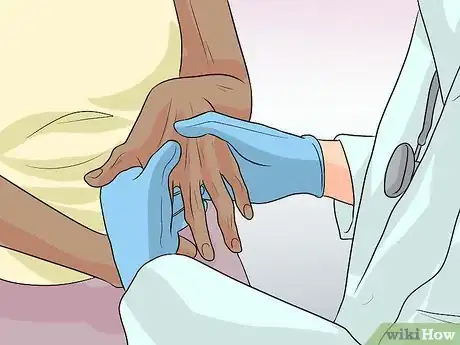


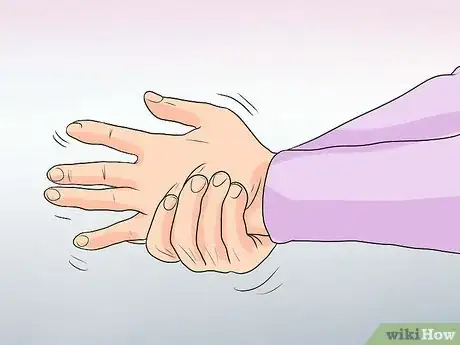

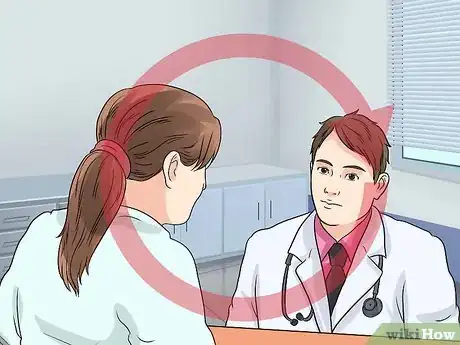
-Step-11.webp)

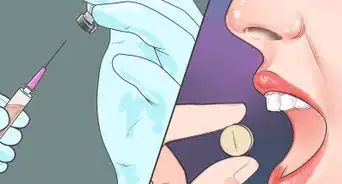

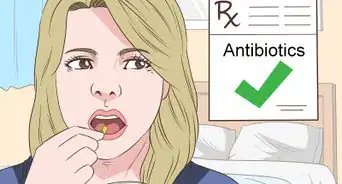
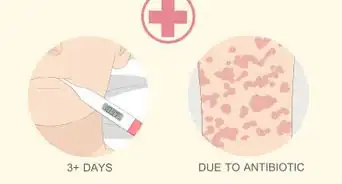






-Step-11.webp)
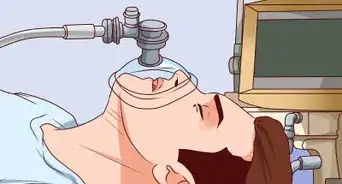











-Step-11.webp)

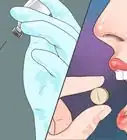
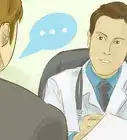



































Medical Disclaimer
The content of this article is not intended to be a substitute for professional medical advice, examination, diagnosis, or treatment. You should always contact your doctor or other qualified healthcare professional before starting, changing, or stopping any kind of health treatment.
Read More...